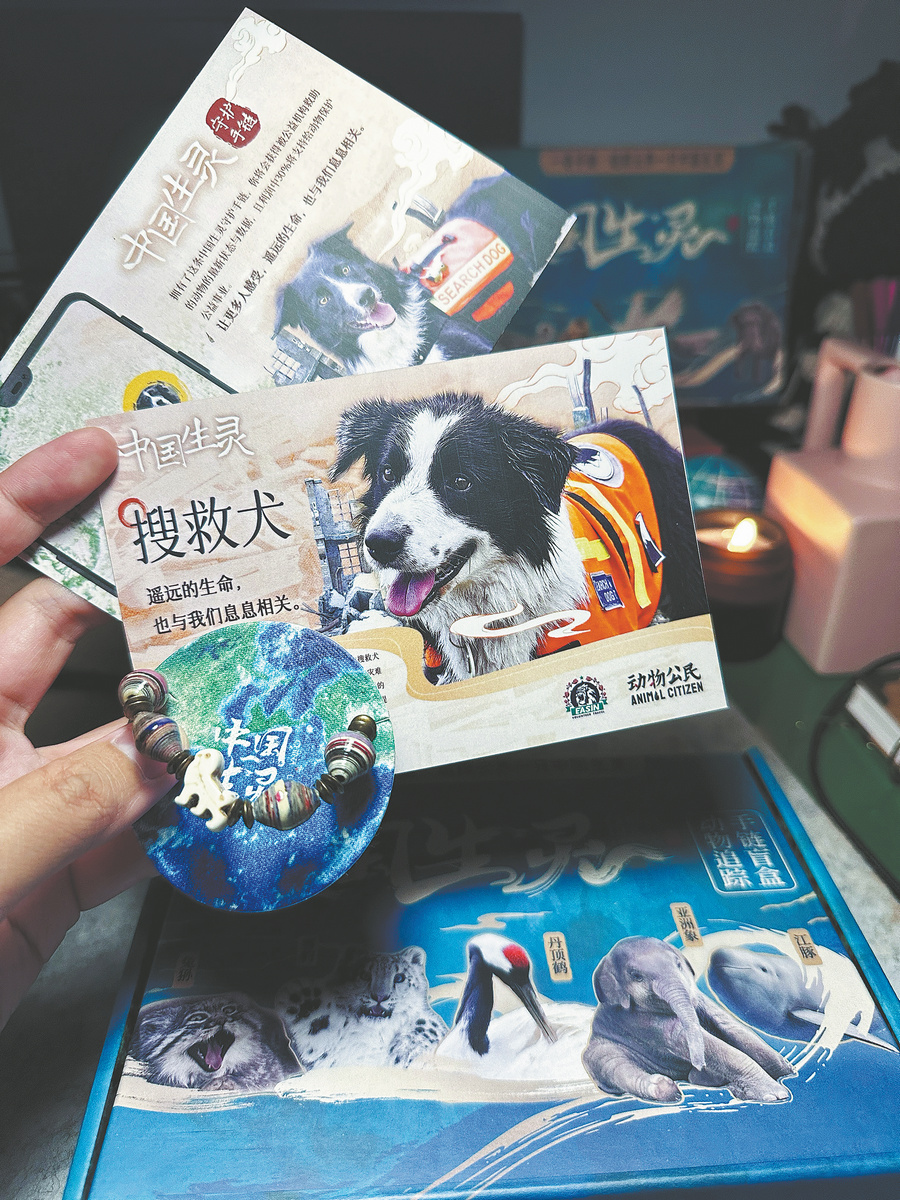Wearing their love of natural world
Animal conservationists engage people through advanced technology, Hou Chenchen reports.


Building connections
The adoption program at Hongshan Zoo is essentially a life education initiative.
Shen, the zoo director, says: "We have always regarded adoption as a way to connect the zoo with the public. Through this form of dialogue, we aim to inspire more people to care about wildlife, awakening their empathy and emotional support for animal conservation. It's a journey of mutual dedication and shared growth."
"Seeing more such products and programs emerge in the future is truly inspiring, as we aim to offer the world newer and better choices," Ling says.
Another purpose of the tracking bracelet is to integrate human emotions with animal data, subtly raising public awareness of citizen science in China, she says.
Citizen science is research conducted with participation from the public.
"For projects like species surveys, relying solely on experts is extremely costly," Ling says. "This should be a social responsibility of every citizen. It's as simple as forming the habit of taking photos of common animals like insects or birds in our daily lives." Closely tied to citizen science is the establishment and development of ecological databases. As data gradually accumulates, building a comprehensive species database can better integrate artificial intelligence-assisted technologies into wildlife conservation, fully unlocking AI's potential.
For instance, Zambia's Kafue National Park, home to more than 6,000 African elephants, previously faced severe poaching issues. The park later implemented a digital protective barrier using thermal imaging and AI recognition technology, combined with large-scale model comparisons, effectively deterring poachers.
Connection is the key word in wildlife conservation and other socially useful activities.

"Charity is something that everyone can contribute to in small ways, ultimately creating a powerful collective force. We need to build new mechanisms to integrate charity into market systems, enabling more parties to play an active role in the process," Ling says.
Whether it is enhancing interactivity through technological means or combining charity with commerce to bring more businesses and products into the realm of public welfare, the essence of the program lies in fostering connections, she says.
"These connections maximize social synergy, promoting harmony between humans and animals, and between humans and nature," she says.
Sang Yihan contributed to this story.
Contact the writer at houchenchen@chinadaily.com.cn





































